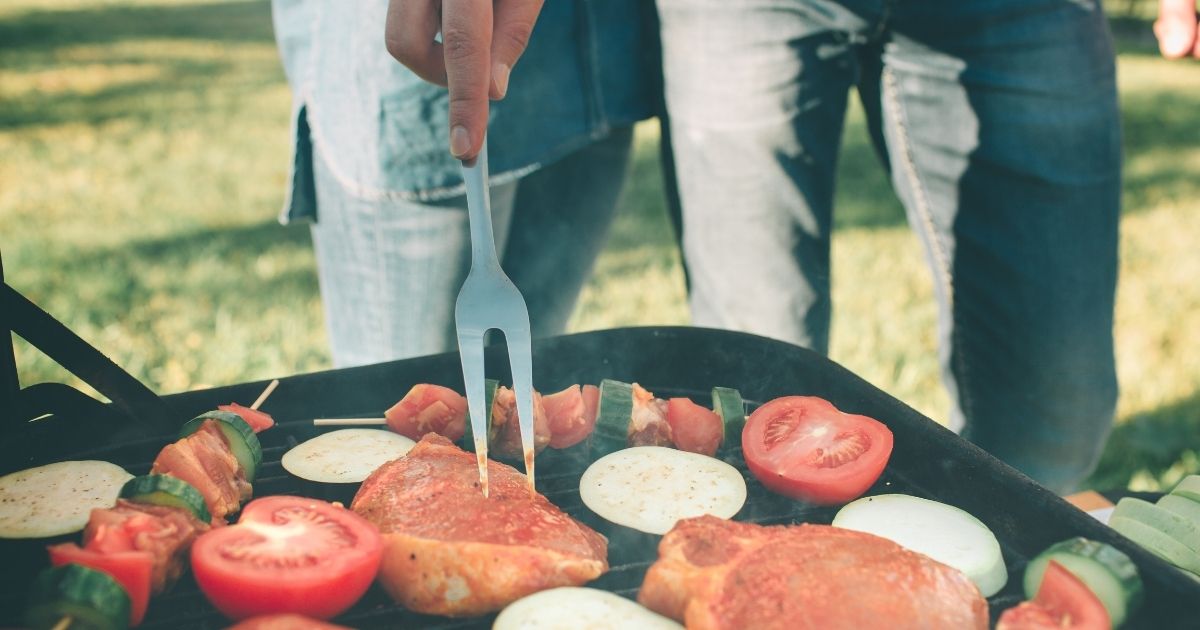
Category: Cooperative Extension

Tailgating food safety in the COVID-19 era!
October 10, 2020 Written by Kathleen Splane
The temperature is getting crisp and the sun is setting earlier. These changes mean tailgate season is here. As we enter the fall sports season there are so many uncertainties swirling around. The Delaware Interscholastic Athletic Association is trying to figure out how to salvage fall sports while keeping youth and families safe from the coronavirus. College football seems to be on pause. Some professional football teams will have no fans present while others are trying to allow 30% capacity in their stadiums. Regardless, football games will be played, and Americans will find creative ways to socialize safely, remembering to socially distance themselves from others. Everyone enjoys getting together with friends and family to cheer their favorite team and to enjoy food together before the game — and sometimes after the game. Because large gatherings in stadium parking lots can’t happen tailgating at home or homegating may be the new norm.
One creative way is to have an outdoor driveway get-together with chairs distanced apart and the television even brought outside. If homes are close enough families can be in their own driveway but still enjoy each other’s company from a distance. Ahead of time everyone should agree to social distancing. Even a buffet will work if people agree to be careful. A couple of things to think about if everyone is using the same buffet table. This includes keeping the mask on while preparing their plate, using a clean plate between servings and no refilling of used cups from pitchers.
To date there have been no cases of coronavirus being transferred through food, but general food safety guidelines need to be followed to prevent foodborne illness. Just like your favorite team, you need to plan so that you and your family can enjoy tasty, safe food. Planning is the key to keeping your food safe during your homegating. If you are going to completely be outside here are some questions to ask when planning what to serve.
- Do you have enough coolers to keep the food cold before cooking and serving? If possible, use separate coolers for uncooked meats and ready-to-eat items such as potato salad or raw veggies or fruits.
- Do you have several inches of ice, frozen gel packs, or containers of ice available to keep perishable food like raw hamburger patties, sausages, and chicken cold?
- Do you have a way to keep hands clean after you’ve washed them? Be sure to have hand sanitizer available.
- Do you have a meat thermometer to measure the temperature of that burger or chicken you are cooking on the grill? It’s the only way you can be sure your meat or poultry has reached a safe temperature (160°F for ground meats, 165°F for poultry, and 145°F for steaks and chops).
- Do you have a way to keep food that is cooked hot (above 135°F) before serving? And cold food cold (below 40°F)?
- If you plan to enjoy leftovers later, do you have a way to either keep food cold (below 40°F) or hot (above 135°F) if you plan on enjoying leftovers after the game? Food left at room temperature should be eaten within 2 hours (1 hour if the game day temperature is above 90 °F).
When you plan your homegate, use this checklist to make sure you have a safe, winning gathering:
- Clean: Soap and water to wash hands. Wet disposable cloths or moist toilettes and hand sanitizer are alternatives for cleaning hands if it is not possible to use water and soap.
- Separate: Separate plates and utensils for raw meats and cooked meats. No contact of juices from raw meat and poultry with ready-to-eat foods.
- Cook: Grill, fuel, cooking utensils, food thermometer.
- Chill: Coolers, ice or frozen gel packs, clean containers for storing leftovers.
Enjoy the game knowing you followed the above safety practices for the food you served. Hopefully, just like you, your team has practiced and followed the rules of the game, so they are winners, too. And in 2021 tailgating at the stadium can commence again.
